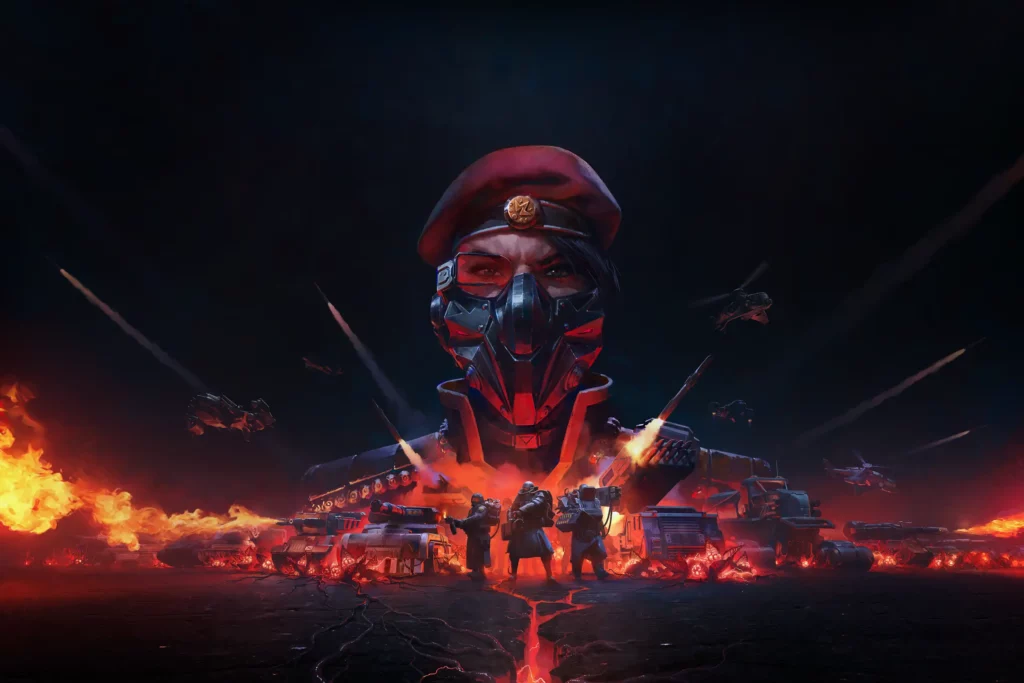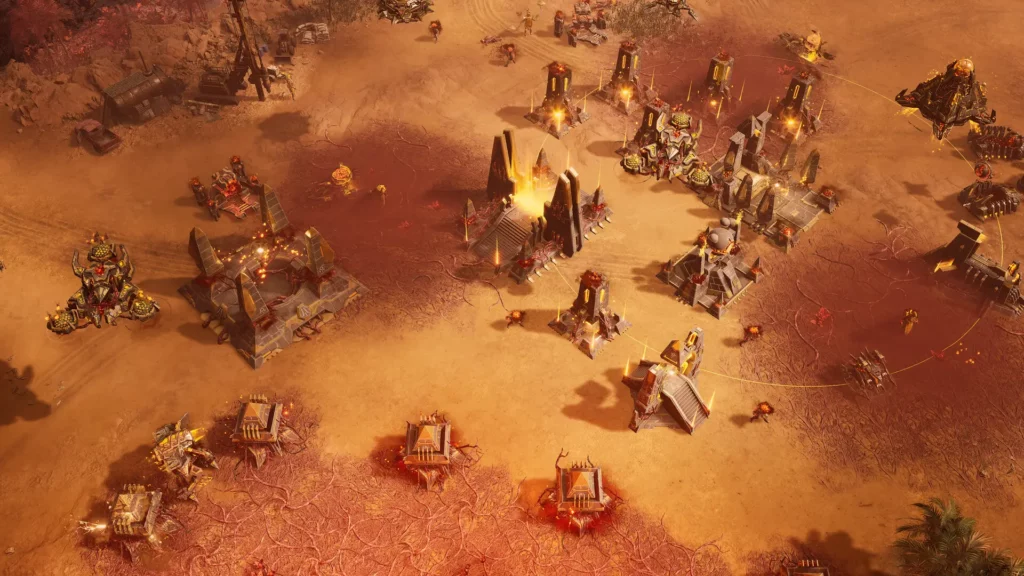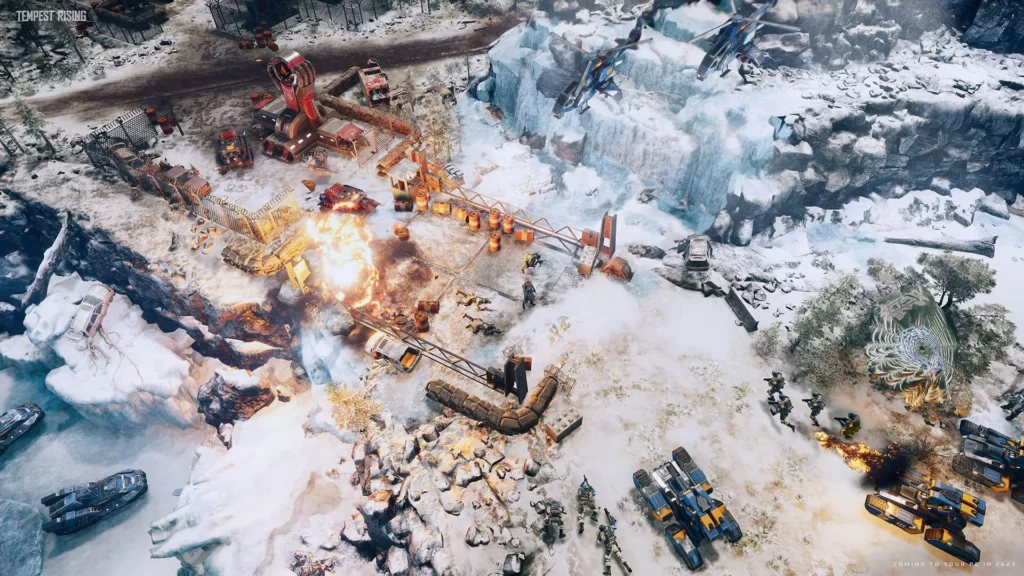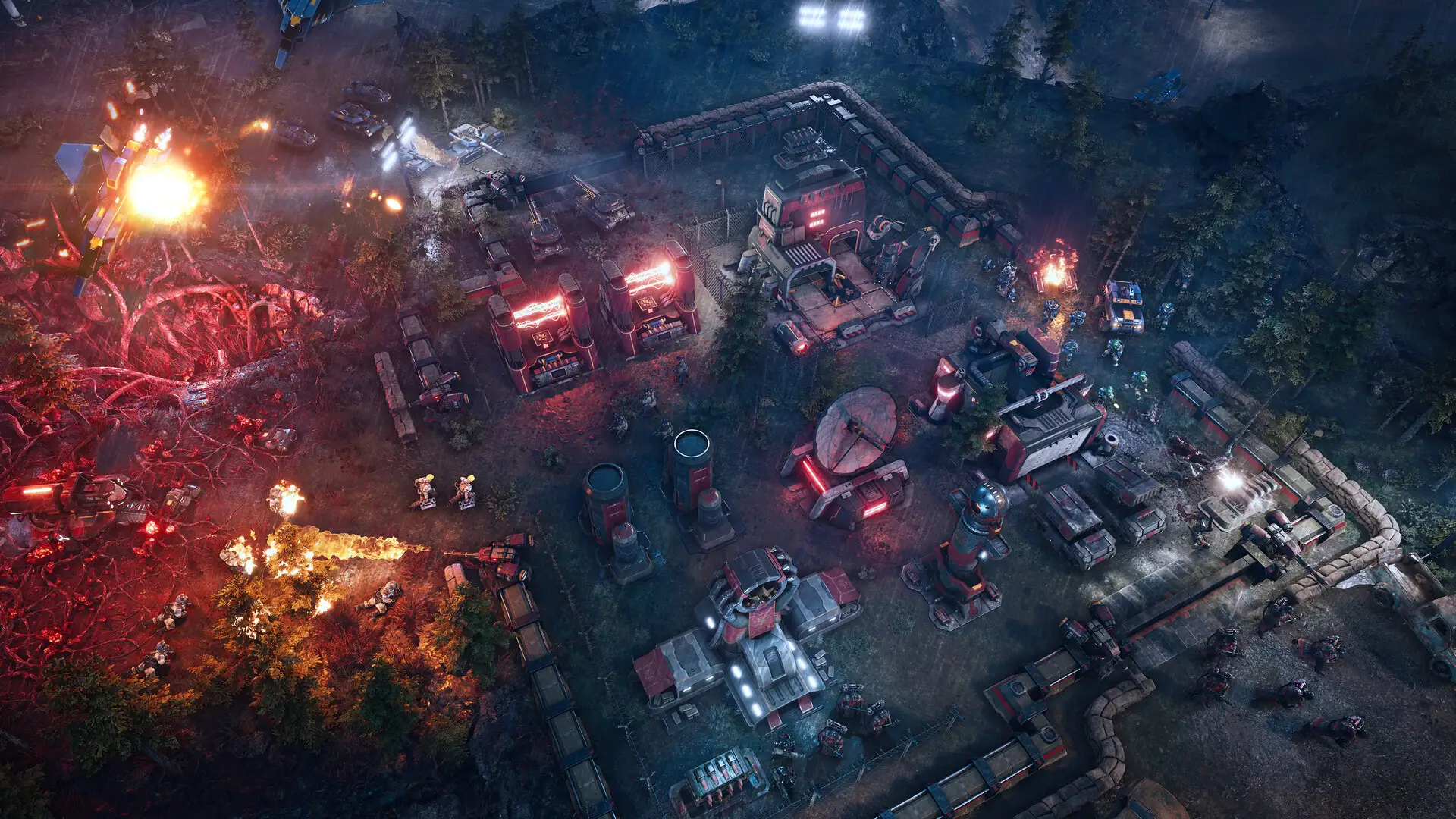A Modern Take on RTS Legacy
Tempest Rising boldly channels the spirit of real-time strategy’s golden age, paying homage to the genre-defining titles of the 90s with remarkable confidence. The game doesn’t simply reference these classics—it thoughtfully builds upon them, delivering a modernized experience that respects its heritage while introducing fresh elements. From its energetic soundtrack to its narrative segments, everything about Tempest Rising demonstrates deep appreciation for what made RTS games great.
Beyond Simple Nostalgia
While Tempest Rising draws clear inspiration from Command & Conquer, it successfully avoids becoming a mere imitation. Instead, it captures the essence of what made such games memorable—dynamic pacing, visually impressive battles, and deeply asymmetrical factions—and refines these elements for today’s players. The thoughtful campaign design, intricate unit mechanics, and perfect pacing demonstrate that this is more than just a trip down memory lane—it’s potentially a modern classic in its own right.

Post-War Energy Struggle
Set in an alternate 1997 on a post-World War III Earth, the game’s world is caught in a conflict over Tempest, a vibrant but dangerous growth that serves as a crucial energy source. The competition to control this volatile resource has sparked a new war between two opposing forces: the disciplined Global Defence Force (GDF) and the aggressively zealous Tempest Dynasty.
Familiar Yet Innovative Gameplay
Players familiar with traditional RTS mechanics will recognize the core elements: constructing bases, harvesting resources, recruiting units, and engaging in large-scale battles. However, each faction introduces unique systems that significantly transform how these fundamentals play out.
Distinctive Faction Design
While the GDF and Tempest Dynasty may echo familiar archetypes, their mechanical execution brings genuine innovation. The GDF, for example, deploys blueprints that gradually construct over time, while the Dynasty opts for immediate structure placement from a build queue. These differences not only affect tactical decisions but completely alter strategic approaches during combat.
Contrasting Combat Strategies
The combat approaches between factions show significant variation. The GDF emphasizes technological superiority, using support drones, vehicle-marking scouts, and versatile hovercraft with air dominance and healing capabilities. In contrast, the Tempest Dynasty relies on overwhelming force, featuring flamethrower troops, missile-launching vehicles, and unusual rolling war machines capable of crushing smaller units outright.
Units With Depth and Purpose
Tempest Rising offers diverse units with specialized active abilities and synergistic potential. The GDF sniper can cloak to approach targets undetected and mark them for devastating airstrikes, while the Dynasty counters with detection specialists. These strategic layers add depth, rewarding tactical awareness and experimentation.
Territorial Control Mechanics
Both factions possess tools for establishing territorial dominance. The GDF can deploy beacons allowing rapid construction within their radius, while the Dynasty uses salvage vans as mobile outposts that both build and repair. These mechanics transform conflicts into dynamic multi-front engagements where positioning and map control become as crucial as raw power.
Challenging and Educational Campaigns
Campaign missions serve dual purposes as both tutorials and tests of strategic skill. Rather than excessive hand-holding, missions quickly thrust players into complex scenarios. One GDF mission requires balancing defense against persistent Dynasty attacks while dismantling key convoy routes under strict time constraints. Another stealth-focused mission challenges players to dismantle an entire base using only a small, elite force.
The Tempest Dynasty campaign begins at a more measured pace but soon intensifies with memorable sequences, such as being reassigned to assist a Tempest harvesting site—an assignment that escalates into a frantic multi-base defense against overwhelming GDF forces.
The Mysterious Third Faction
As both campaigns approach their conclusion, a new faction enters the conflict—the enigmatic Veti. Though currently unavailable in multiplayer or skirmish modes, they introduce a dramatic shift to the endgame. Their units operate on completely different principles and possess tremendous power, bringing fresh excitement to the final missions.


Impressive Presentation
Visually, Tempest Rising stands out with its dynamic effects—vehicles generate realistic dust, buildings collapse convincingly, and aircraft crash with satisfying detail. The sound design is equally impressive. Explosions resonate powerfully, and the soundtrack features contributions from various artists, capturing nostalgic intensity. Tracks like “Death Squad” and “Aegis” pay homage to classic RTS themes while introducing fresh, modern energy.
Areas for Improvement
Despite being polished and largely bug-free, there are some missed opportunities. The inability to play as the Veti outside the campaign is somewhat disappointing. Additionally, both campaigns follow similar trajectories, which can reduce the impact of whichever is played second. While the intermission briefings aim for a retro atmosphere, the 3D character models lack the distinctive charm of the full-motion videos they reference.
A Triumphant Return to Form
Tempest Rising doesn’t attempt to revolutionize the real-time strategy genre. Instead, it reinforces its foundations, demonstrating that classic RTS mechanics remain compelling when executed with care. With robust dual campaigns, balanced yet asymmetrical faction design, and thrilling moment-to-moment gameplay, this title stands as testament to what made RTS games great originally.
Its only significant limitation is a certain restraint—additional ambition in faction variety or storytelling could elevate it further. Nevertheless, Tempest Rising powerfully declares that the real-time strategy genre still has considerable life left in it.
